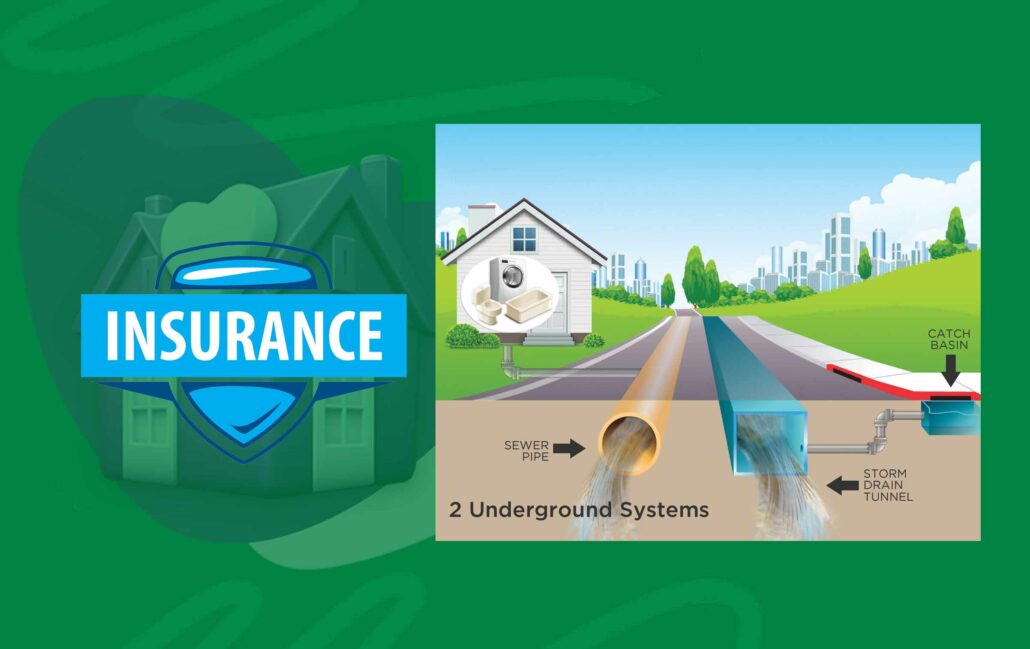Owning a home can lead to unforeseen expenses, but various automobile insurance options, including sewer backup insurance, can help protect your finances. It safeguards your property and possessions if they sustain harm from a sewer or water backup. An instance of sewage backup occurs when water or sewage seeps back into your house through the drains, resulting in a downpour or a blockage in the sewage system.

Moreover, this occurs when water or sewage may enter your home through the sinks, showers, and toilets. Then your basement may flood as a result of it. However, sewer backup insurance covers the expenses of repairing the drainage line, clearing wastewater, and enhancing your residence.
What is Sewer Backup Insurance
Sewer backup is an extension to your policy that protects against financial crises when drain water, sump pump water, or sewer backs up and overflows into your property. Generally, standard landlord policies do not include it from insurance companies. However, it can be paid for separately as a rider to your landlord’s insurance policy.
Moreover, it’s important to distinguish between flood insurance and sewer backup insurance. In addition, most homeowners get flood insurance to cover losses brought on by surface water rises. This water may have been caused by snowfall, strong winds, collapsing swimming pools, or breaking water body banks. Furthermore, sewer backup insurance is typically triggered when the main sewer or drains on your property are flooded with water.
What Does Sewer Backup Insurance Cover
Sewer backup insurance protects against unforeseen water entering your residence through sewers, sewage tanks, downspouts, pipes, and eaves troughs. Moreover, a blocked sewer line, severe rainfall, snow melting, or outdated sewer tanks can cause this.
It will pay for the expenses of washing up and fixing the damaged parts of your residence, as well as the replacement and restoration of the affected staff. With this, you will have protection in case of a sewer backup.
What Does Sewer Backup Insurance Not Cover
Certain kinds of water claims do not offer coverage by sewer backup insurance. You ought to think about including water damage and overland water insurance when comparing quotes. Furthermore, damages resulting from skipping routine maintenance are not covered. Water-related packages are available from certain providers, so whatever kind of water leaks in, your property is covered.
Causes of Sewer Backup
There are various reasons why your home may have sewage backing into it. Sewer backups can cost a lot of money to repair, regardless of how little the leak is or how deep the water gets. Typical causes include the following:
Blocked pipes
There are several common causes of clogged drain pipes. The issue involves excessive disposal of food particles, flushing of non-biodegradable items, and neglect of general maintenance. However, if the clog is ignored, it may get worse and cause sewer backups in other areas of the home.
Tree roots
Sewer backups can occur when subterranean pipes break and collapse due to entanglement with powerful tree roots. To possibly avoid tree roots harming your sewer system, have slow drains and strange noises checked as soon as you notice them.
Busted line
Sewage can frequently seep into your property due to damage to the main line that connects your home to the outside. If you believe this to be the cause of the sewage backup in your home, get in touch with your local government.
How Much Does Sewer Backup Insurance Cost
Homeowners insurance in the US costs an average of $2,104 annually for $250,000 of dwelling coverage. Additionally, your actual cost depends on several factors, including your age and your home, your credit score (in most states), and your claim history. Remember that adding endorsements or increasing your coverage level will increase your premium.
How to Prevent Sewer Backup
The best method of prevention, as with other possible threats to your home, is to always be proactive. The chance of having to deal with a basement full of sewage water can be decreased by taking precautions to avoid sewer backups. Moreover, here are a few preventative strategies you should take:
Select a location on higher ground
Purchasing a house on high ground in a neighborhood with a low risk of flooding is something to think about. Large trees should be taken into account when buying a property because their roots can lead to a variety of plumbing problems.
Maintain your drains
By doing routine maintenance and using your drains correctly, you can usually avoid clogs. Additionally, refrain from using anything but toilet paper in the toilet. Also, avoid downsizing anything that could cause damage (like coffee grounds or grease), and use your garbage disposal wisely if you have one.
Have your sump pump serviced
Having a professional inspection of your sump pump every few years is a good idea to make sure it is operating efficiently and that no clogs are forming.
Deal with plumbing problems
Don’t let plumbing problems persist. Repairing them will only get harder and more expensive, and they can cause serious problems like basement flooding and sewer backups.
Does Insurance cover Sewer Backup?
Sewer backup is not covered by standard home insurance policies, but it can be added as an optional endorsement. Since flood insurance claims are on the rise, many insurance brokers will quote sewer backup by default. However, the majority of companies still charge extra for it.
Sewer backup insurance normally costs between $150 and $300 a year, depending on your provider, your age, and the location of your home. Furthermore, insurance against sewer backups does not substitute for routine maintenance. For insurance to apply, you must keep your sewer drains clear and in good working order, even if you have coverage.
